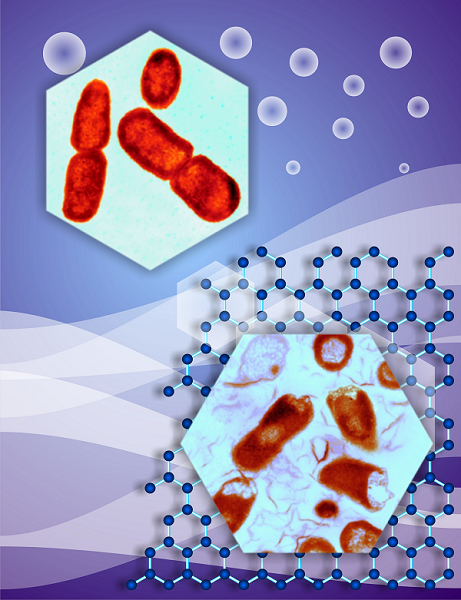






Recently, the researchers of Laboratory of Physical Biology, Shanghai Institute of Applied Physics reported their advancement about novel graphene-based antibacterial paper on ACS Nano of American Chemical Society (Graphene-Based Antibacterial Paper. Wenbing Hu, Cheng Peng, Weijie Luo, Min Lv, Xiaoming Li, Di Li, Qing Huang and Chunhai Fan,ACS Nano, 2010, 4 (7), pp 4317–4323). After published on the website, this research was covered by many media, including Nanowerk, Qmed, Sciencedairy and Bioon. Especially, Eurekalert!, which sponsored by American Association for the Advancement of Science (AAAS), pointed out that the antibacterial activity of graphene-based materials might offer important applications in environmental and clinical fields.
Inventing and applying antibacterial materials to inhibit or kill pathogenic bacteria is critical to protect the public health. Traditional antibacterial materials, such as antibiotics, metal ions, quaternary ammonium compounds are known to be associated with concerns on antibiotics-resistance, environmental pollution, relatively complex processing and high cost. The development of nanotechnology provides a new insight to overcome these challenges.
Graphene is a monolayer of carbon atoms that are tightly packed into a two-dimensional crystal. The unique properties of high mechanical stiffness and excellent electronic transport properties offer a wide range of potential opportunities and application, especially in nanoelectronic devices, solar cells and sensors. Chunhai Fan, Qing Huang and their group explored the antibacterial activity of graphene oxide (GO). After incubation with GO suspension for 2h, the viability of E.coli lost up to 98.5%. Further results demonstrated that the antibacterial activity of GO arised from treated E.coli membrane damage. Surprisingly, GO presented minimal cytotoxicity on mammalian cells. Moreover, the macroscopic free-standing GO paper fabricated from their suspension via simple vacuum filtration could effectively inhibit the growth of bacteria. Given the superior antibacterial effect of GO and the fact that GO can be mass-produced and easily processed to make free-standing and flexible paper with low cost, we expect this new carbon nanomaterial to find important environmental and clinical applications.
